#sage inkberry
Photo
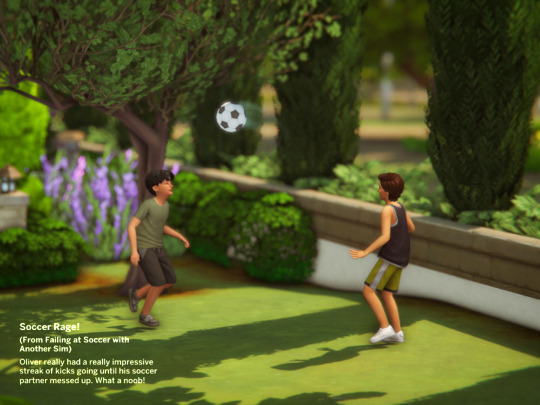
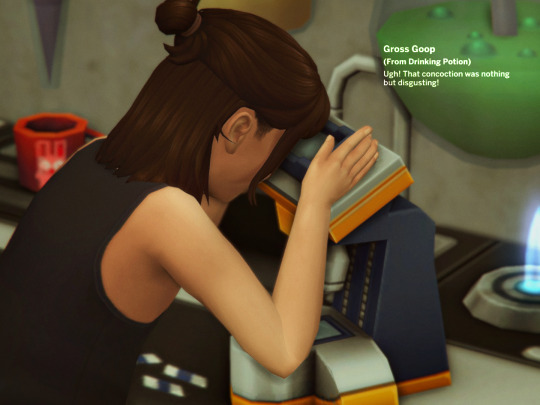
while the boys create a friendship/rivalry, sage prefers to spend her time playing on the computer or studying new things (almost done with the whiz kid aspiration).
48 notes
·
View notes
Text
Beech Forest by Stephen Sandy
Light from the ugliest lamp I ever saw, here
on the table that triples for reading, eating (can’t say
dining), business on the phone; ugliest except
a few around the corner in that guest house at windows
—plaster driftwood; cylinders like rockets or sanitary
napkins propping shades; thin torso of a youth;
red globe on orange globe, the works, somebody’s
collection. Wouldn’t she love this one, lump of lamp base
intending landscape, two donkeys in mustard glaze,
heads ruefully down, one carrying two rush panniers
large enough to hold your pens or salts and peppers; on
the other a shifty man with droopy moustache rides,
**
grumping under his sombrero; right leg broken
off at the knee, left leg clipped at ankle. They make
no progress, this mold-made work—the joins, arthritic
ridges where dabs of grayish green suggest
a wizened bush from which a brass post rises
to hold a shade that doesn’t fit and twice
has tried to burn, as crusty sores at the rim show.
Still, it lights my work. Why hate it? Do I care?
These indecorous furnishings stand for failure, are
a clutter that weighs down, defeats the purpose,
like dumbbells taken along on vacations; the pen jar;
lamp base, sextant, portable folding triptych.
**
The writing table fills with clutter. Specials
coax me to nudge buying into play. A checkout
coupon lets me get some brand of lunch meats
fifty-five cents off if I spend two dollars
but I just can’t find it when I’m shopping, the ticket—
with its rubric of good news and inscrutable forest
of bar code, black on red—to lead me on; back home
there it is, on the table, laying waste my power to spend.
What I have wanted (with Larkin) to do must be
“essentially undoable, it belongs to the imagination.”
Rather, the demolition has begun, piss and shit
and blood mix in the snow-white bowl; and yet
**
I find the Beech Forest (behind the beach
dunes) that Allen recommended “without
reservation.” The man was right—it more
than satisfies, these beech ponds and their dune
forest. I sat on a pitch pine that had blown
over and then turned round and risen again,
and bowed part making a seat something like
a saddle; the tree was growing while I sat on it
as were the other pitch pines round the pond ruddy
in afternoon, late light of day, rough trunks
with tufts of twisted branches green with needles,
it was idyllic, wind speaking through the pines,
**
solitude:—O, yes, two high-breasted girls
came striding by, I heard them coming, I
heard them going, yammering at full volume
not looking left or right, they passed me, were
out of sight and soon of earshot, Doppler effect
caused by exuberant youth in oblivious chitchat.
And people are smoking in these dry woods too,
not policing their butts is how I know,
the butts will surface from the heavier, sifting sand,
sand spilling, surfing down hills, crashing in waves
over the path here. But call it solitude,
when a thought—but wait! I thought—I should not be
**
having a thought here, this moment: yet a vision
of a Chinese poet in his study overlooking
such a pond as this arrives out of the silence
like the yellow water lilies on the water, pads
spreading out in files like a design on the broadloom
of a lobby. The sage is working on a poem, brushing it
on silk, inspired by a blend of Tao and
Confucius. Doubtless he would not forget
allusions to Sung poets, if he were not
a Sung poet himself, in which case he would have to
echo Han or T’ang; and he would be writing
of solitude; time passing; absent friends
**
(enlightenment would have to be inferred).
No matter, I didn’t bring a pen today.
However, over there are inkberry bushes, so
with a reed I just might make a start. . . . Farther
on the path I listen to a bird, a warbler perhaps,
I do not know the song or see the bird.
There with the pines and sand and birdsong, and no
prayer- or guide- or selfhelp-book, no
serious commune, the mind must yearn to be
led on; it wants a deity, an altar to approach;
an altar at least to take steps toward; occasion
to rise to—with nothing planned for the mind,
**
it’s like a person suddenly blind, not blind
for a long time and knowing the ropes, but just
now, rope-stung, blind—and groping, feeling around
for the way, any way, or, closer to home,
when the power goes at night just getting from
here to there even though you know the drill,
—you never find the batteries when you need them,
groping down cellar for the circuit breaker then
you flip it; nothing, it’s a bigger failure you are part of—
know the layout in general yet without ceremony
the mind leans forward, over an edge, hoping for,
needing a little ritual, like a guide rail to keep it
**
from falling, going down. Even then the mind
finds need of other news, keeps on desiring
alterity somewhere at hand. For example,
walking the streets of Provincetown, nothing to see
but lots to look at, all that fluff and buff,
the Michelin-man day-trippers aching along;
suddenly I want a prayer book, maybe not
Bottles and Stools or The Little Red Book but still . . .
even a pocket copy of A Shropshire Lad,
such as I find soon after all the buff and fluff
at Tim’s, the only bookstore on the street,
handy for quick reads. Thin as a shortbread biscuit,
**
THE RICHARDS PRESS LONDON 1915, no doubt
with its khaki cover, intended for some Tommy’s
backpack, a backward solace for off-duty hours
in the trenches: admittedly not very much
on the other hand just the thing I’m talking after;
a talisman perhaps is all, an amulet
with words that say, buck up, come on, you’ll make it,
there’s something on after all this, no matter
what the words say. Housman’s “vision,” his drear
anguish of love for someone, something, lad
and landscape that never were, that might shoot threads
of gold among the bloody muslins and the mud;
**
mind wants other news than what the ruffled senses
bring data of—smoke or flesh or birdsong.
It saw there was a space within, reserved
for turning toward another; other; that
no bullet, arrowwood or beach plum might
fill, though these could occupy that space
a moment.
Again I heard the casual chirping
of that bird, off in that tupelo, the song
I did not know, below the cries of gull
and jay I did. The unknown I saw was not
enough to satisfy; or—satisfied when it
was framed, complement of what is known for sure.
**
It’s—like—when you go someplace strange, new,
the seashore, any boundary, you want to learn the names
of plants. Start looking at the edges of leaves. It gives
a grip on where you are, and who, or seems to,
to know bullbrier, bearberry, blueberry. You get a GUIDE
or a local to tell. On the dune path I found one, a gnarled
bush alone, hollylike but succulent leaf; nothing
like it in the book. But why feel helped in nature
by a name? When a horde of flower children wanted
to know what they should do to be saved (back when)
Snyder told them, “learn the names of plants;
of animals; learn to do something with your hands.”
**
Well I went out to that dune again: to cop a copy
of the leaf I took and lost: so it’s only bayberry
after all; dioecious, two-sexed: some leaves different
from others, that’s OK only one got pictured
in my book; but the waxiness, bayberry for sure, set
to be rendered into candles for a gifte shoppe,
nauseating noose of “scents.” Its nutlets twinkle
near the oily leaves aglow above the sand,
bone white. Doesn’t make me feel better to know now
about that scrawny straggler. Sanctimonious
pilgrim know-alls, Bradford & Co.! Forest
into desert, just like that. No time flat, considering.
0 notes
Text
Natives here, natives there, natives, natives everywhere…
Is there any garden center that doesn’t carry coneflower?
Now and again, someone asks me where they can buy native plants. Sometimes they go on to complain that native plants are hard to find in today’s nursery industry. My hackles rise, and I know at that moment that they have no real knowledge of plants, yet have simply heard this somewhere and felt it worth repeating. It’s just another example of industry bashing without investigating the facts. In fact, in a chat with plant guru and renowned nurseryman Bill Barnes just the other day, he said that he personally surveyed the industry and that three of every four plants in the landscape industry were native or derived from natives.
Many selections of the native smooth hydrangea are available.
I know I can walk into any local garden center and find a large number of natives. Are these peevish people unaware that the ubiquitous blackeyed
Susans and coneflowers are native? That’s just for starters. You may choose to speed read the next two paragraphs to match how quickly my fingers typed the many native plants that are commonly found in our region’s local garden centers. Please don’t be vexed that I am choosing not to use binomial nomenclature for the sake of brevity.
Southern magnolia is a staple offering in southern states.
Specifics are important, as there are often native and non-native species of the plants that I have chosen to list by the most broadly accepted common names in this region. I am also not going to get into the controversy over cultivars of natives at this time, but will on a later date.
I’m certain I can find both smooth and oakleaf hydrangea, ninebark, sweetshrub, inkberry, fothergilla, clethra, sweetspire, beautyberry, blueberry, serviceberry, winterberry and deciduous holly, yaupon holly, rhododendron, native azalea, bayberry, redbud, dogwoods, southern and sweetbay magnolia, bald cypress, red and sugar maple, tulip poplar, several species of native oak, river birch, Carolina jessamine, coral honeysuckle, beebalm, several phlox, butterfly weed, blanketflower, Joe-pye weed, yucca, panicums, coreopsis, perennial hibiscus, yarrow and mealy cup sage. Pant, pant…
Somewhat less common, but often found in the better garden centers include buttonbush, sumac, bottlebrush and red buckeye, witch-hazel, pawpaw, hornbeam, anisetree, poplarleaf leucothoe, chokeberry, baptisia, spigelia, obedient plant, asters, tiarella, muhly grass, crested iris, autumn sage, amsonia, snakeroot , columbine, liatris, cardinal flower, bigleaf magnolia, blackgum, asters and…you get it, so I’ll stop.
This was a long route to point out that the folks that say native plants are hard to find, wouldn’t know a native if they were standing on it. I shouldn’t be surprised in this era, when It’s no longer important to inform yourself on topics before passing judgement. Silly me, to think folks might research a topic before forming an opinion. but then, look all around us at today’s America, where sorting truth from spin has fallen from fashion.
Wrenching the wheel back from that political veer, here is my complaint about native plants. Some of the easiest to grow and most useful native plants have not made their way into mainstream markets. I’m faced with my own ineptitude when I look at a couple of decades of trying to convince growers to grow these, retailers to carry them, and consumers to ask for them. It’s a chicken or the egg sort of dilemma.
Lemony blooms of spicebush light up this wild slough in late winter.
Stunning, lush, loved by wildlife, so why let a few thorns stop you?What’s not to want about a late winter blooming shrub/small tree that will grow in sun or shade, isn’t picky about soil, has golden fall color, can provide red berries for wildlife or for your own culinary use, and produces wonderfully fragrant foliage that provides food the caterpillars of beautiful butterflies? Who wouldn’t want that? Yet spicebush is largely absent in the trade. When I’ve been able to find it, the plants are seed grown, and there is no way to know the gender on the young specimens. I’d like to have several females and a male for pollinating, maybe one more male as a backup stud. Instead, the seller tells me to buy several, and hope there will be at least one of each gender in the lot. I don’t like this suggestion, but I summon a smiling response, since I’m told by those that have tried that our native spicebush is not easy to root from cuttings. Tissue culture could be an option, but since there is so little demand, there has been little interest.
Another pet native is devil’s walking stick, Aralia spinosa. This glorious plant is billowing into clouds of creamy blooms alongside most country roads in late summer in west Tennessee, but the foliage alone is exquisite. Each enormous leaf flutters with intricate bi- to tri-pinnately compound leaves that can span up to five feet in width, the largest of any temperate tree on the continent.
Many pollinators are attracted to the beach ball sized panicles of small ivory flowers, but these blooms seem to be especially prized by the larger swallowtails. The dark purple berries are relished by birds, and by that time the stems of the infructescence has turned a brilliant deep pink that will remain on the plant for weeks.
Sure, its suckering nature is a drawback to some, so if you don’t have the space to let it colonize, remove those as they appear. I’ve seen individual stems get to 30 feet, and add strong vertical drama to the vignette. Other drawbacks? I’ve seen the “are you crazy?” look on people’s faces when they realize I mean the plant with the rings of wicked thorns on the trunks. These are people who have just shown me pictures of their yards, crowded with landscape roses or barberries. Hypocrites.
A few die-hard native plant nurseries carry it. Trees by Touliatos was the only mainstream nursery I knew that did, and that fabulous destination garden center is now erased from the planet.
Plato, I miss you every day, but you are always riding along with me every time I pass a stunning colony of devil’s walking stick on a country road. You were always ahead of the curve…
Natives here, natives there, natives, natives everywhere… originally appeared on Garden Rant on July 26, 2018.
from Gardening http://www.gardenrant.com/2018/07/natives-here-natives-there-natives-natives-everywhere.html
via http://www.rssmix.com/
0 notes
Text
Natives here, natives there, natives, natives everywhere…
Is there any garden center that doesn’t carry coneflower?
Now and again, someone asks me where they can buy native plants. Sometimes they go on to complain that native plants are hard to find in today’s nursery industry. My hackles rise, and I know at that moment that they have no real knowledge of plants, yet have simply heard this somewhere and felt it worth repeating. It’s just another example of industry bashing without investigating the facts. In fact, in a chat with plant guru and renowned nurseryman Bill Barnes just the other day, he said that he personally surveyed the industry and that three of every four plants in the landscape industry were native or derived from natives.
Many selections of the native smooth hydrangea are available.
I know I can walk into any local garden center and find a large number of natives. Are these peevish people unaware that the ubiquitous blackeyed
Susans and coneflowers are native? That’s just for starters. You may choose to speed read the next two paragraphs to match how quickly my fingers typed the many native plants that are commonly found in our region’s local garden centers. Please don’t be vexed that I am choosing not to use binomial nomenclature for the sake of brevity.
Southern magnolia is a staple offering in southern states.
Specifics are important, as there are often native and non-native species of the plants that I have chosen to list by the most broadly accepted common names in this region. I am also not going to get into the controversy over cultivars of natives at this time, but will on a later date.
I’m certain I can find both smooth and oakleaf hydrangea, ninebark, sweetshrub, inkberry, fothergilla, clethra, sweetspire, beautyberry, blueberry, serviceberry, winterberry and deciduous holly, yaupon holly, rhododendron, native azalea, bayberry, redbud, dogwoods, southern and sweetbay magnolia, bald cypress, red and sugar maple, tulip poplar, several species of native oak, river birch, Carolina jessamine, coral honeysuckle, beebalm, several phlox, butterfly weed, blanketflower, Joe-pye weed, yucca, panicums, coreopsis, perennial hibiscus, yarrow and mealy cup sage. Pant, pant…
Somewhat less common, but often found in the better garden centers include buttonbush, sumac, bottlebrush and red buckeye, witch-hazel, pawpaw, hornbeam, anisetree, poplarleaf leucothoe, chokeberry, baptisia, spigelia, obedient plant, asters, tiarella, muhly grass, crested iris, autumn sage, amsonia, snakeroot , columbine, liatris, cardinal flower, bigleaf magnolia, blackgum, asters and…you get it, so I’ll stop.
This was a long route to point out that the folks that say native plants are hard to find, wouldn’t know a native if they were standing on it. I shouldn’t be surprised in this era, when It’s no longer important to inform yourself on topics before passing judgement. Silly me, to think folks might research a topic before forming an opinion. but then, look all around us at today’s America, where sorting truth from spin has fallen from fashion.
Wrenching the wheel back from that political veer, here is my complaint about native plants. Some of the easiest to grow and most useful native plants have not made their way into mainstream markets. I’m faced with my own ineptitude when I look at a couple of decades of trying to convince growers to grow these, retailers to carry them, and consumers to ask for them. It’s a chicken or the egg sort of dilemma.
Lemony blooms of spicebush light up this wild slough in late winter.
Stunning, lush, loved by wildlife, so why let a few thorns stop you?What’s not to want about a late winter blooming shrub/small tree that will grow in sun or shade, isn’t picky about soil, has golden fall color, can provide red berries for wildlife or for your own culinary use, and produces wonderfully fragrant foliage that provides food the caterpillars of beautiful butterflies? Who wouldn’t want that? Yet spicebush is largely absent in the trade. When I’ve been able to find it, the plants are seed grown, and there is no way to know the gender on the young specimens. I’d like to have several females and a male for pollinating, maybe one more male as a backup stud. Instead, the seller tells me to buy several, and hope there will be at least one of each gender in the lot. I don’t like this suggestion, but I summon a smiling response, since I’m told by those that have tried that our native spicebush is not easy to root from cuttings. Tissue culture could be an option, but since there is so little demand, there has been little interest.
Another pet native is devil’s walking stick, Aralia spinosa. This glorious plant is billowing into clouds of creamy blooms alongside most country roads in late summer in west Tennessee, but the foliage alone is exquisite. Each enormous leaf flutters with intricate bi- to tri-pinnately compound leaves that can span up to five feet in width, the largest of any temperate tree on the continent.
Many pollinators are attracted to the beach ball sized panicles of small ivory flowers, but these blooms seem to be especially prized by the larger swallowtails. The dark purple berries are relished by birds, and by that time the stems of the infructescence has turned a brilliant deep pink that will remain on the plant for weeks.
Sure, its suckering nature is a drawback to some, so if you don’t have the space to let it colonize, remove those as they appear. I’ve seen individual stems get to 30 feet, and add strong vertical drama to the vignette. Other drawbacks? I’ve seen the “are you crazy?” look on people’s faces when they realize I mean the plant with the rings of wicked thorns on the trunks. These are people who have just shown me pictures of their yards, crowded with landscape roses or barberries. Hypocrites.
A few die-hard native plant nurseries carry it. Trees by Touliatos was the only mainstream nursery I knew that did, and that fabulous destination garden center is now erased from the planet.
Plato, I miss you every day, but you are always riding along with me every time I pass a stunning colony of devil’s walking stick on a country road. You were always ahead of the curve…
Natives here, natives there, natives, natives everywhere… originally appeared on Garden Rant on July 26, 2018.
from Garden Rant https://ift.tt/2NOhhJN
0 notes
Photo
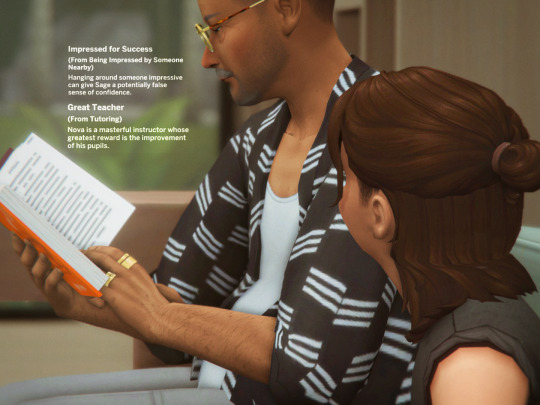


Nova being the one responsible for most of Sage's education made her cultivate an admiration towards him; just Oliver being a lover of sweet things. (+ day of taking photos while oliver is still tiny)
#not so berry#nsb#nsb:8#ts4#ts4 gameplay#nova inkberry#sage inkberry#evie aimes#coraline inkberry#oliver inkberry
46 notes
·
View notes
Photo


Inkberrys
#someday I will stop myself from using grain on the images... someday#my sims#ts4#sage inkberry#hunter inkberry
33 notes
·
View notes
Text






(un)officially starting gen 9 (sage is still a teenager)
so much has happened but not at the same time; there's obviously been some time since the last post, it includes:
Romeo has sadly passed away;
Oliver is now also a teenager. Coral and Evie have also aged;
Sage and Hunter finished high school early, and both have already passed university. Sage in Computer Science and Hunter in Biology;
goals gen 9
master video gaming skill
social media career -> master charisma skill (i think)
master computer whiz aspiration
reach 1,000,000 followers on social media
#ts4#ts4 gameplay#not so berry#nsb:9#nsb:8#sage inkberry#devin#i won't post anything i've played broken in the last few months#i'm still deciding how i'm going to do gen 9
14 notes
·
View notes
Photo
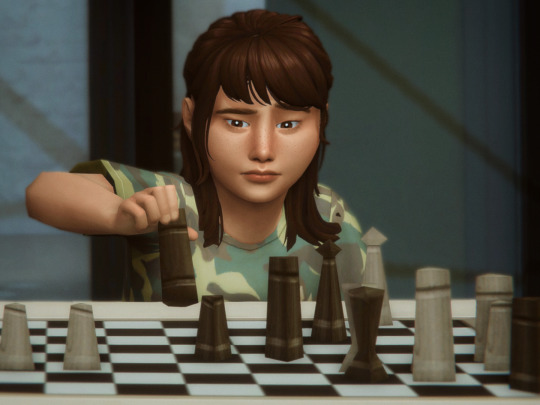

A few of the times that I've done something to Sage's aspiration (new hair (´▽`ʃ♡ƪ)); have left the vault open and come across this scene from Nova;
#wanted to be in Nova's place#not so berry#nsb#nsb:8#the sims 4#ts4#ts4 gameplay#nova inkberry#sage inkberry
38 notes
·
View notes
Photo

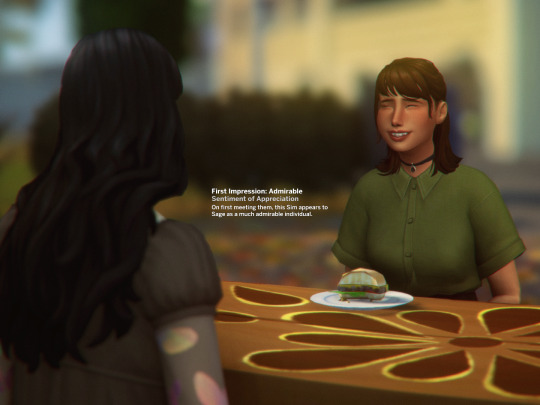
sage and shiew reconnected <3
26 notes
·
View notes
Photo
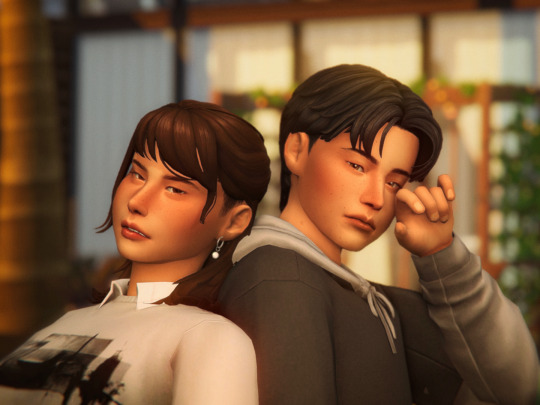
sage goal oriented, genius, geek
hunter admired icon, self-assured, self-absorbed
#both want to be popular and i'm not here for it 😵💫#not so berry#nsb:8#ts4#ts4 gameplay#sage inkberry#hunter inkberry
34 notes
·
View notes
Photo

while hunter is focused more on sports, sage besides games likes music (coral is also her mentor)
26 notes
·
View notes
Photo

first day of class I try a little to follow them, luckily they started by taking a exam (both failed 😂)
28 notes
·
View notes
Photo
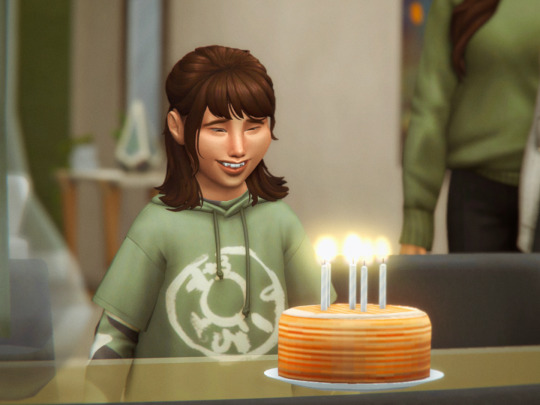
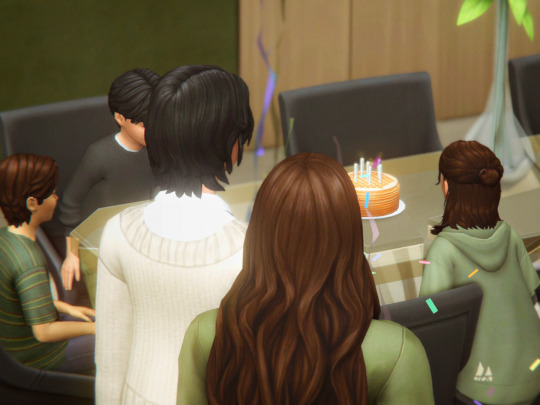

twins' bday, finally
#get ready for a lot of glow around here (unfortunately it was these screenshots or replay)#i also did a reshade switch so it will change a little#not so berry#nsb:8#ts4#ts4 gameplay#sage inkberry#hunter inkberry#coraline inkberry#evie aimes#oliver inkberry
37 notes
·
View notes
Photo

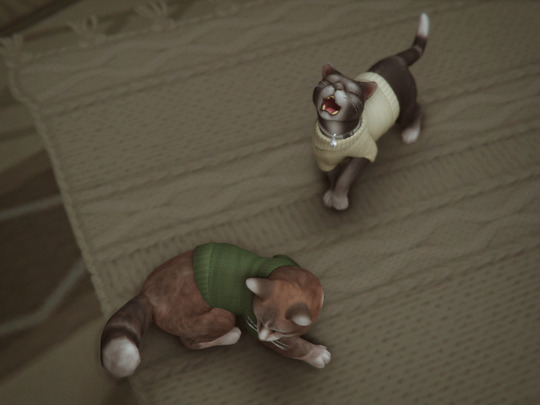
trio while still children, the twins' birthday is approaching + romeo and annie finally wearing their sweaters, looking so cute that they don't even look like they fight every day.
33 notes
·
View notes
Photo
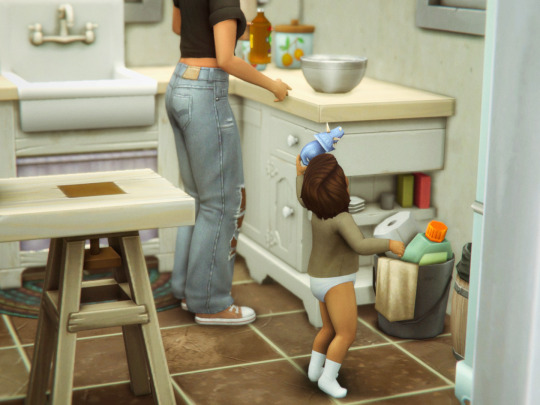

Oliver's birthday is coming up + Sage got clingy to her moms.
33 notes
·
View notes
Photo


open the game and don't pass the cas check!
#wanting to finish gen 8 but at the same time being my favorite gen is killing me#hunter inkberry#sage inkberry#my sims#ts4#the sims 4
50 notes
·
View notes